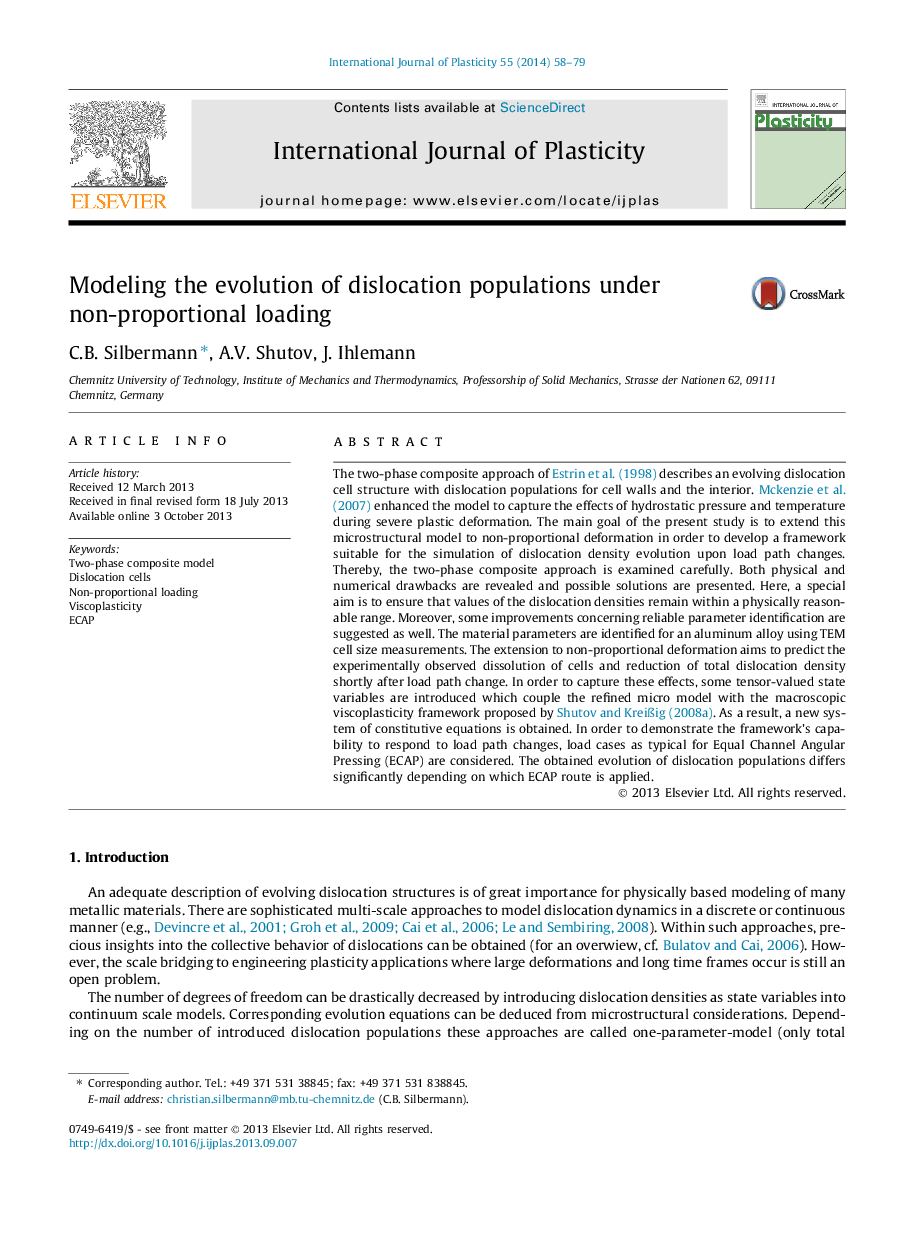| کد مقاله | کد نشریه | سال انتشار | مقاله انگلیسی | نسخه تمام متن |
|---|---|---|---|---|
| 786804 | 1465618 | 2014 | 22 صفحه PDF | دانلود رایگان |
• The 2-phase composite approach of Estrin et al. is critically analyzed and refined.
• The refined model ensures non-negative dislocation densities and consistent fluxes.
• The refined micro model is coupled with a macroscopic model of Shutov and Kreissig.
• The evolution of dislocation densities depends significantly on the load path.
• A drop of the dislocation density is predicted shortly after the load path change.
The two-phase composite approach of Estrin et al. (1998) describes an evolving dislocation cell structure with dislocation populations for cell walls and the interior. Mckenzie et al. (2007) enhanced the model to capture the effects of hydrostatic pressure and temperature during severe plastic deformation. The main goal of the present study is to extend this microstructural model to non-proportional deformation in order to develop a framework suitable for the simulation of dislocation density evolution upon load path changes. Thereby, the two-phase composite approach is examined carefully. Both physical and numerical drawbacks are revealed and possible solutions are presented. Here, a special aim is to ensure that values of the dislocation densities remain within a physically reasonable range. Moreover, some improvements concerning reliable parameter identification are suggested as well. The material parameters are identified for an aluminum alloy using TEM cell size measurements. The extension to non-proportional deformation aims to predict the experimentally observed dissolution of cells and reduction of total dislocation density shortly after load path change. In order to capture these effects, some tensor-valued state variables are introduced which couple the refined micro model with the macroscopic viscoplasticity framework proposed by Shutov and Kreißig (2008a). As a result, a new system of constitutive equations is obtained. In order to demonstrate the framework’s capability to respond to load path changes, load cases as typical for Equal Channel Angular Pressing (ECAP) are considered. The obtained evolution of dislocation populations differs significantly depending on which ECAP route is applied.
Journal: International Journal of Plasticity - Volume 55, April 2014, Pages 58–79
